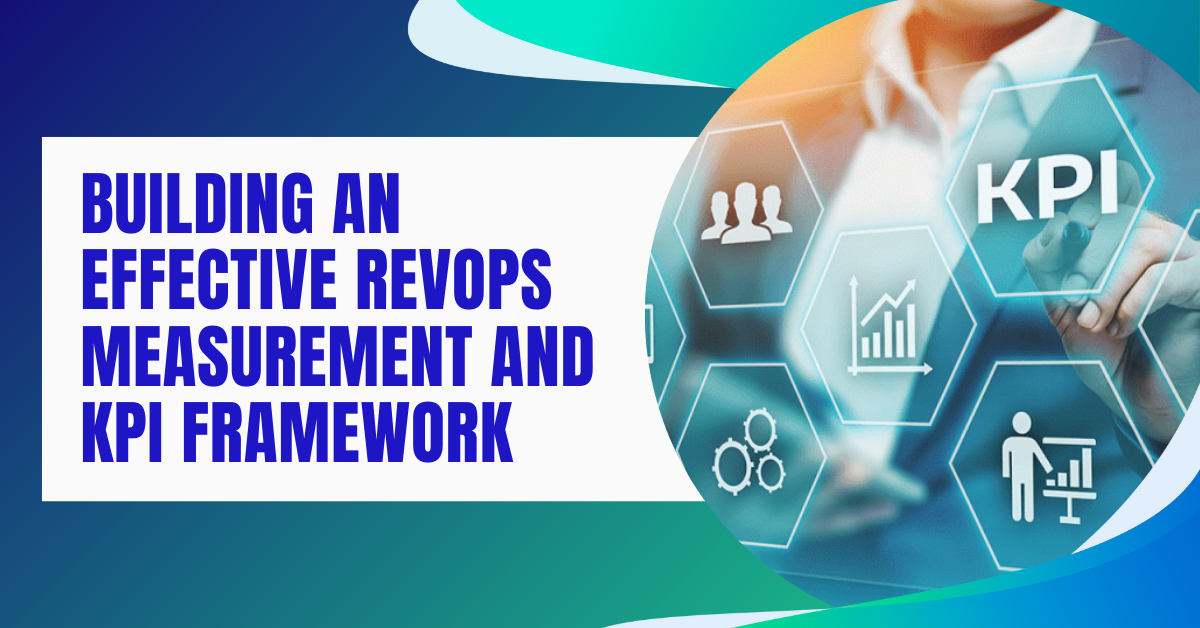Building an Effective RevOps Measurement and KPI Framework
What gets measured gets managed. This adage rings especially true for Revenue Operations (RevOps), where success depends on clear, actionable metrics. Yet, many organizations struggle to define and track the right key performance indicators (KPIs), leading to misaligned teams and missed opportunities.
An effective RevOps measurement framework ensures that every department—marketing, sales, and customer success—is aligned on shared goals. It provides the clarity and focus needed to optimize processes, identify bottlenecks, and make data-driven decisions. In this post, we’ll break down how to design a measurement framework that drives results and share tips for selecting the KPIs that matter most.
Why a Measurement Framework Matters in RevOps
Imagine running a relay race where each runner doesn’t know their teammate’s pace or timing. Success depends on coordination, yet without shared metrics, there’s no way to synchronize efforts. In RevOps, measurement serves as the baton—it ensures every team is working cohesively toward the same finish line.
A well-designed framework achieves three critical outcomes:
- Alignment: Teams are unified around common goals and priorities.
- Transparency: Performance is visible, making it easier to identify areas for improvement.
- Accountability: Teams understand how their actions contribute to revenue growth.
Key Elements of a RevOps Measurement Framework
- Unified Goals Across Teams
- Every KPI should align with overarching revenue objectives, such as increasing customer lifetime value (CLV), accelerating pipeline velocity, or improving retention rates.
- For example:
- Marketing focuses on lead quality (e.g., MQL-to-SQL conversion rate).
- Sales tracks win rates and average deal size.
- Customer success measures churn and upsell rates.
- Leading and Lagging Indicators
- Leading indicators predict future outcomes, such as website traffic or new opportunities added to the pipeline.
- Lagging indicators measure results, such as revenue generated or deals closed.
- A balanced framework includes both to track progress and assess effectiveness.
- Centralized Reporting
- Use a single platform to consolidate data and create real-time dashboards. Tools like Power BI or Tableau can integrate metrics from multiple departments, ensuring everyone has access to the same insights.
- Regular Review Cycles
- Metrics should be reviewed on a consistent schedule (weekly, monthly, or quarterly) to evaluate progress and adjust strategies.
Defining the Right KPIs for RevOps
Selecting KPIs can be tricky—too few, and you miss important nuances; too many, and teams lose focus. Start by identifying the metrics that directly impact your revenue goals.
Examples of Effective KPIs by Department:
Marketing:
- Lead-to-MQL conversion rate
- Cost per lead (CPL)
- Campaign ROI
Sales:
- Opportunity-to-win rate
- Average sales cycle length
- Pipeline coverage ratio (total pipeline vs. quota)
Customer Success:
- Net Promoter Score (NPS)
- Churn rate
- Expansion revenue (upsells and cross-sells)
RevOps-Wide:
- Customer acquisition cost (CAC)
- Customer lifetime value (CLV)
- Revenue growth rate
Avoiding Common Pitfalls
Even the best measurement frameworks can falter if not implemented correctly. Watch out for these common mistakes:
- Metric Overload: Focus on a manageable number of KPIs that directly influence revenue outcomes.
- Siloed Reporting: Ensure all teams use shared dashboards to avoid conflicting data.
- Infrequent Reviews: Regularly revisit your metrics to ensure they remain relevant as your business evolves.
Tools to Support Your Measurement Framework

- CRM Platforms: Centralize customer data and track revenue performance (e.g., Salesforce, HubSpot).
- BI Tools: Analyze data and create visual dashboards (e.g., Tableau, Power BI).
- Automation Platforms: Streamline reporting and reduce manual data entry (e.g., Zapier, Clari).
The RevOps Advantage: Data-Driven Decision-Making
A strong measurement framework doesn’t just track performance—it empowers teams to act on insights. For example:
- If marketing sees a low MQL-to-SQL conversion rate, they can refine lead scoring criteria.
- If sales identifies a bottleneck in the pipeline, they can adjust their outreach strategies.
- If customer success notices a spike in churn, they can proactively address customer pain points.
By continuously monitoring and optimizing KPIs, RevOps transforms data into actionable strategies that drive growth.
Final Thoughts: Building for Long-Term Success
Building an effective RevOps measurement framework takes time and collaboration. It requires aligning teams on shared goals, selecting meaningful KPIs, and creating a system for tracking and refining metrics. But the payoff is worth it: a clear, actionable framework that drives alignment, accountability, and sustained revenue growth.
At Brainiac Consulting, we help businesses design and implement RevOps measurement systems tailored to their unique needs. Let’s work together to build a framework that keeps your teams focused and your revenue growing.




